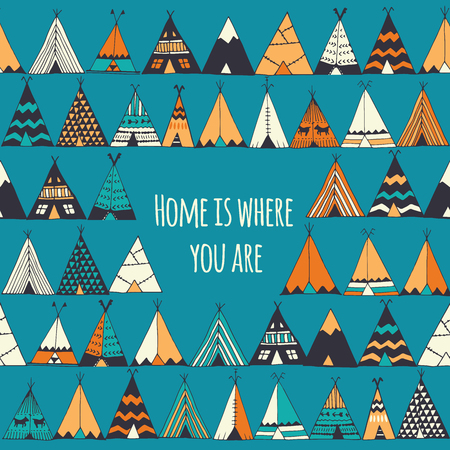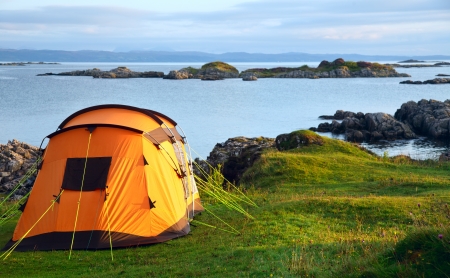Introduction to Water-Based Camping for UK Paddlers
For the intrepid canoeist or kayaker, the wild rivers and lochs of Wales and Scotland offer a unique invitation: the chance to camp in some of the most scenic, untouched corners of the British Isles. Whether you’re drawn to the glassy lakes of Snowdonia or the rugged coastline of Argyll, water-based camping is more than a pastime—it’s a tradition steeped in respect for both land and water. Understanding the nuances of wild and semi-wild camping is essential before you set off with paddle in hand.
The Spirit of Wild Camping in the UK
Wild camping—setting up your tent away from established campsites—has long been part of outdoor culture in Britain, but it comes with its own code of conduct. In much of England and Wales, wild camping technically requires landowner permission; however, Scotland stands apart thanks to its progressive access laws. The Land Reform (Scotland) Act 2003 gives everyone statutory rights to access most land and inland water, provided that they act responsibly. This includes pitching up on riverbanks, loch shores, and even remote islands.
Etiquette on Water and Shore
Wherever you roam, discretion is key. Choose previously used sites where possible, keep groups small, and leave no trace. Campers should avoid disturbing wildlife or livestock, minimise noise, and always pack out what they bring in—including litter and food waste. Fires are discouraged unless using a stove or an established fire ring; local regulations can be strict in sensitive areas such as national parks or nature reserves.
Access Rights: Wales vs. Scotland
While Scotland’s open access makes it a mecca for paddlers seeking true wilderness, Wales presents more restrictions. In Wales, rivers often run through private land; therefore, research your chosen stretch beforehand, as access agreements vary by region and waterway. Some places allow responsible wild camping along certain rivers or lakes if you obtain prior consent—always check with local authorities or paddling clubs for current guidance.
By understanding these core principles before launching your boat, you ensure not only your own safety but also safeguard this special privilege for those who will paddle after you.
2. Planning Your Expedition: Safety, Kit, and Navigating Local Waters
Before embarking on your paddling adventure across the scenic campsites of Wales and Scotland, meticulous planning is essential to ensure both safety and enjoyment. The rugged beauty of these regions demands respect for local conditions, a robust kit list, and a firm understanding of access rights and navigation. Below, you’ll find hard-won advice to help you prepare for the unpredictable British outdoors.
Key Considerations for Safe Paddling Adventures
Weather Awareness
British weather is notorious for its rapid changes—sunshine can shift to squalls in minutes. Always check the Met Office forecast before setting out, but remember that mountain valleys and coastal inlets often have microclimates. Prepare for rain even if the sky looks clear at breakfast. Fog, wind, and sudden cold snaps are common hazards on open water.
Essential Kit List
Your kit should cover all bases, from protection against hypothermia to emergency repairs. Here’s a breakdown tailored to Welsh lakes, Scottish lochs, and tidal rivers:
| Category | Kit Item | Why It Matters |
|---|---|---|
| Clothing | Waterproofs, thermal layers, quick-dry base layers | Counters wind chill; dries fast after rain or capsize |
| Safety Gear | PFD (personal flotation device), whistle, throwline | Mandatory for self-rescue; vital in rough or tidal waters |
| Navigation | Waterproof map/OS sheet, compass, GPS (optional) | Navigates remote lochs and complex estuaries safely |
| Shelter & Warmth | Bivvy bag/tarp, firesteel/matches in waterproof case | Essential if weather traps you ashore unexpectedly |
| Comms & Lighting | Mobile phone in drybag, headtorch with spare batteries | For emergencies and low-visibility launches/landings |
Legal Access and Local Etiquette
The right to paddle varies by location. In Scotland, thanks to the Land Reform Act 2003, you enjoy broad access rights—but always follow the Scottish Outdoor Access Code. In Wales, most lakes and rivers are privately owned; seek explicit permission or stick to designated navigable waterways. Respect wildlife habitats and avoid disturbing nesting birds or spawning fish.
Navigating Lakes, Lochs, and Tidal Rivers
- Lakes and Lochs: Wind can whip up waves quickly—hug the sheltered shore where possible. Check for submerged rocks near islands or promontories.
- Tidal Rivers: Study tide tables religiously. Incoming tides can be a boon or a trap; outgoing tides may expose hazardous mudflats or strong currents. Know your exit points before launching.
Quick Reference: Key Navigation Tips by Region
| Region/Waterbody Type | Main Hazards | Tactical Advice |
|---|---|---|
| Welsh Lakes (e.g., Bala Lake) | Suddensqualls,coldwater,distantshorelines | Paddle close to shore; pack extra dry gear; identify safe landing spots early. |
| Scottish Lochs (e.g., Loch Lomond) | Wind funneling,longcrossings,islandswithlimitedaccess | Aim for shortest crossing distance; avoid exposed sections in high winds. |
| Tidal Estuaries (Dee Estuary,Tay Estuary) | Mudflats,strongtidalflow,changingchannels | Time journeys with incoming tide; carry tide tables; never cross alone. |
Treat every journey as a fresh challenge—pack thoroughly, plan conservatively, and respect local knowledge. In the wild reaches of Wales and Scotland, preparation is your best mate.

3. Top Lake and Lochside Campsites in Wales
Hand-Picked Welsh Waterside Retreats for Paddlers
Wales offers a rugged tapestry of lakes and wild lochs, perfect for paddlers seeking adventure paired with breath-taking scenery. Whether you’re after tranquil waters, mountainous backdrops, or coastal estuaries teeming with wildlife, these hand-picked campsites provide direct access to the best of Welsh waterscapes. Each site is chosen for its unique blend of natural beauty, accessibility by canoe or kayak, and practical facilities that cater to the needs of the modern paddler.
Llyn Gwynant Campsite – Snowdonia’s Crown Jewel
Nestled at the foot of Snowdon, Llyn Gwynant is an iconic lakeside campsite that welcomes paddlers straight onto the water. The gentle shoreline makes for easy launching and landing, while the surrounding peaks provide a dramatic setting. Facilities are robust: hot showers, eco-friendly toilets, a well-stocked café, and ample space for wild-style camping or parking your car close to your tent. This spot is ideal for those wanting a mix of comfort and wilderness within reach of Snowdonia’s top paddling routes.
Llyn Tegid (Bala Lake) – Adventure Hub in North Wales
Bala Lake is the largest natural lake in Wales and boasts several campsites with direct water access. The main Bala Camping site is particularly welcoming to paddlers: there’s a dedicated slipway, secure kit storage, and even paddleboard hire if you fancy switching disciplines. The surrounding area is steeped in local legend and packed with traditional pubs for a post-paddle pint. Accessibility is excellent by both road and water, making it suitable for solo explorers or family groups alike.
Pembrokeshire Coastal Gems – River Teifi & Estuary Sites
For those who prefer saltwater adventures mixed with river exploration, Pembrokeshire offers a handful of scenic riverside campsites along the Teifi estuary. Many are tucked away from busy roads, accessible via winding country lanes or directly by kayak if you’re approaching from upstream. Facilities are often basic but functional—think compost loos, water taps, fire pits—and the birdlife here is second to none. Wild swimming at dawn and evening estuary paddles come as standard perks.
Essential Tips for Welsh Waterside Camping
Before setting off, check local bylaws regarding wild camping and always respect access rights; many landowners in Wales are supportive of responsible paddlers who leave no trace. Weather can turn quickly—pack sturdy waterproofs and know your exit points before heading out on larger lakes. Finally, Welsh hospitality shines brightest in its small communities—support local cafés and outdoor shops where possible to keep these spots thriving for future adventurers.
Scotland’s Idyllic Island and Loch Campsites
Scotland offers paddlers a legendary landscape of wild, water-based camping—where ancient lochs shimmer beneath brooding skies and remote islands beckon with windswept beaches. Whether you’re drawn to the freshwater solitude of inland lochs or the rugged adventure of island hopping in the Hebrides, this region delivers unforgettable nights under canvas. Here’s a regional breakdown of standout spots and essential guidance for making the most of Scotland’s unique outdoor access rights.
Lochside Wild Camping: Legendary Waters Await
Scotland’s lochs are world-renowned among paddlers for their dramatic scenery and sense of true wilderness. The following table highlights some top lochside wild camping areas, all accessible by kayak or canoe:
| Region | Loch | Key Features | Camping Notes |
|---|---|---|---|
| Highlands | Loch Shiel | Remote, historic, surrounded by mountains | Sheltered bays; minimal facilities; respect wildlife habitats |
| Trossachs & Central Belt | Loch Lomond | Largest freshwater loch; numerous islands | Byelaws in place—check permit zones March–September |
| West Highlands | Loch Morar | Britain’s deepest freshwater body; pristine shores | No formal sites; leave no trace essential |
| Cairngorms | Loch Insh & Loch Morlich | Pine forests, mountain views, sandy beaches | Some managed campsites nearby; wild camping possible outside busy areas |
Island Adventures: Inner & Outer Hebrides Highlights
The Scottish isles promise an extraordinary paddling and camping experience. From tidal races to white sand beaches, each archipelago has its own personality. Here are prime options for water-based explorers:
| Archipelago | Key Islands for Campers | Paddling Appeal | Campsite Considerations |
|---|---|---|---|
| Inner Hebrides | Mull, Skye, Jura, Islay, Eigg, Rum | Dramatic cliffs, sea caves, abundant wildlife (seals, otters) | Avoid crofting land; use existing pitches where possible; midges can be fierce in summer—prepare accordingly! |
| Outer Hebrides (Western Isles) | Lewis & Harris, North/South Uist, Barra, Benbecula, Berneray | Sandy machair beaches, turquoise waters, remote solitude | Sensitive dune systems—pitch above high tide line; always check ferry and weather conditions before committing to crossings. |
The Scottish Outdoor Access Code: Essential Etiquette for Paddlers and Campers
Your Rights—and Responsibilities:
- Access Land Freely: Scotland’s Land Reform Act 2003 gives you rights to camp responsibly on most unenclosed land—including loch shores and islands—unless specifically excluded (e.g., gardens, near buildings).
- Leave No Trace: Pack out all waste—including human waste if possible. Fires should be avoided unless using a raised stove. Never cut live wood.
- Avoid Disturbance: Keep groups small (ideally under three tents), camp discreetly and stay only one or two nights in each spot. Respect livestock and local communities.
Tough Conditions? Be Ready.
The Scottish weather can turn brutal without warning. Always pack robust shelter, extra insulation layers and waterproofs—even in summer. Check midges forecast and bring headnets plus repellent.
Navigating Scotland’s water-based campsites demands respect for nature and preparedness worthy of any hard-nosed survivor. Embrace the wild responsibly—and you’ll find some of Britain’s finest paddling adventures awaiting you north of the border.
5. Environmental Awareness & Leave No Trace Principles
Understanding the British Waterways and Upland Habitats
Paddling and wild camping in Wales and Scotland’s scenic waterways is a privilege, not a right. These regions are home to fragile ecosystems, rare species, and delicate landscapes that have been shaped over millennia. The responsibility falls on every paddler to safeguard these environments for future generations.
Minimising Your Environmental Impact
Smart Site Selection
Always choose established or durable surfaces for camping—gravel banks, rocky outcrops, or short grass well above the waterline. Avoid trampling reed beds, wetlands, or peat bogs, as these areas are especially vulnerable to damage. Stick to marked access points when landing your craft to minimise bank erosion.
Campfire Caution
The romantic allure of a campfire is undeniable, but open fires can scar the landscape and devastate local flora. In many Scottish and Welsh uplands, fires are prohibited; opt for a portable stove instead. If fire is permitted, keep it contained, use existing fire rings if available, burn only dead wood found on the ground, and ensure all traces are removed before you depart.
Respecting Flora and Fauna
Wildlife Considerations
Spring and early summer are sensitive periods for nesting birds along riverbanks and loch shores. Give wildlife plenty of space—observe from a distance using binoculars, avoid disturbing nests or dens, and never feed animals. Keep dogs under close control at all times to prevent disturbance to livestock and ground-nesting birds.
Protecting Plant Life
Upland plants such as heather, mosses, and lichens take decades to recover from trampling. Set up tents on hard ground wherever possible and refrain from picking flowers or uprooting any vegetation.
Specifics of Leave No Trace in British Context
Pack It In, Pack It Out
All litter—including food scraps—must be taken home. Even biodegradable waste can disrupt local nutrient balances or attract scavengers. Use reusable containers and avoid single-use plastics.
Sanitation Protocols
Bury human waste at least 30 metres from water sources and paths, digging a small hole (15-20 cm deep) where soil is soft enough. Toilet paper should be packed out or burned safely—never left behind. In remote upland areas with thin soils, consider carrying out all waste using dedicated bags.
Waterways Etiquette
Avoid contaminating streams or lakes with soaps or detergents—wash cooking gear well away from the water’s edge using minimal biodegradable soap if necessary. Respect fishing rights by steering clear of anglers and their lines; always give way to other users on narrow waterways.
By adhering strictly to Leave No Trace principles tailored to the unique needs of Wales and Scotland’s waterways, paddlers play a critical role in preserving these wild places. Responsible actions today ensure that those who follow can experience the same sense of awe tomorrow.
6. Local Knowledge: Culture, Wildlife, and Seasonal Highlights
Immersing Yourself in Welsh and Scottish Heritage
Camping along the waterways of Wales and Scotland isn’t just about the scenery—it’s an opportunity to step into living history. In Wales, you’ll find rivers threading past ancient castles and remote chapels; every valley has its legends, spoken in the lyrical tones of Cymraeg. Respect local customs: when passing through a village or stopping at a riverside pub, a friendly “Shwmae” (hello) in Wales or a courteous nod in rural Scotland goes a long way. In Scotland, especially the Highlands and islands, paddling routes often intersect with crofting communities, where Gaelic is still heard and traditional ceilidh music drifts from village halls. Honour both lands’ Leave No Trace principles by camping responsibly and supporting local businesses when restocking supplies.
Wildlife Encounters on Waterways
Wales and Scotland are sanctuaries for wildlife. Keep your eyes peeled for otters on the River Teifi or osprey fishing on Loch Lomond. In Wales, listen for the haunting call of red kites overhead; in Scotland, watch out for red squirrels darting through Caledonian pinewoods or seals bobbing near sea lochs. A good pair of binoculars is as essential as your paddle—never approach nesting birds or disturb animals at dawn or dusk when they’re most active. Fieldcraft here means blending in: keep noise to a minimum and set up camp away from obvious wildlife trails.
Seasonal Fieldcraft Tips
Midsummer Light & Wild Swimming
During midsummer, both regions enjoy extended daylight—Scotland’s northern latitudes can see sunsets well past 10 pm. This is prime time for wild swimming; pack a lightweight towel and neoprene socks for brisk loch dips after a day’s paddle. Always check water depth and current before entering—local knowledge is invaluable, so ask fellow paddlers or rangers about safe spots.
Autumn Rut & Changing Colours
Come autumn, forests blaze with gold and crimson—Scotland’s glens are particularly stunning. It’s also stag rutting season: listen for bellowing red deer echoing across moors at dawn. Keep your distance during this period; stags are unpredictable and best admired from afar using binoculars. Make use of this quieter season to enjoy campfires (where permitted) under clear night skies rich with stars.
Aligning Your Adventure with Local Events
For the culturally curious, align your journey with festivals like Eisteddfod in Wales or Highland Games in Scotland—both offer authentic glimpses into regional identity. Check local calendars ahead of time; small towns may host gatherings celebrating everything from coracle races to storytelling nights. By tuning into these rhythms—nature’s and culture’s—you’ll elevate your paddling experience from mere sightseeing to true immersion.


